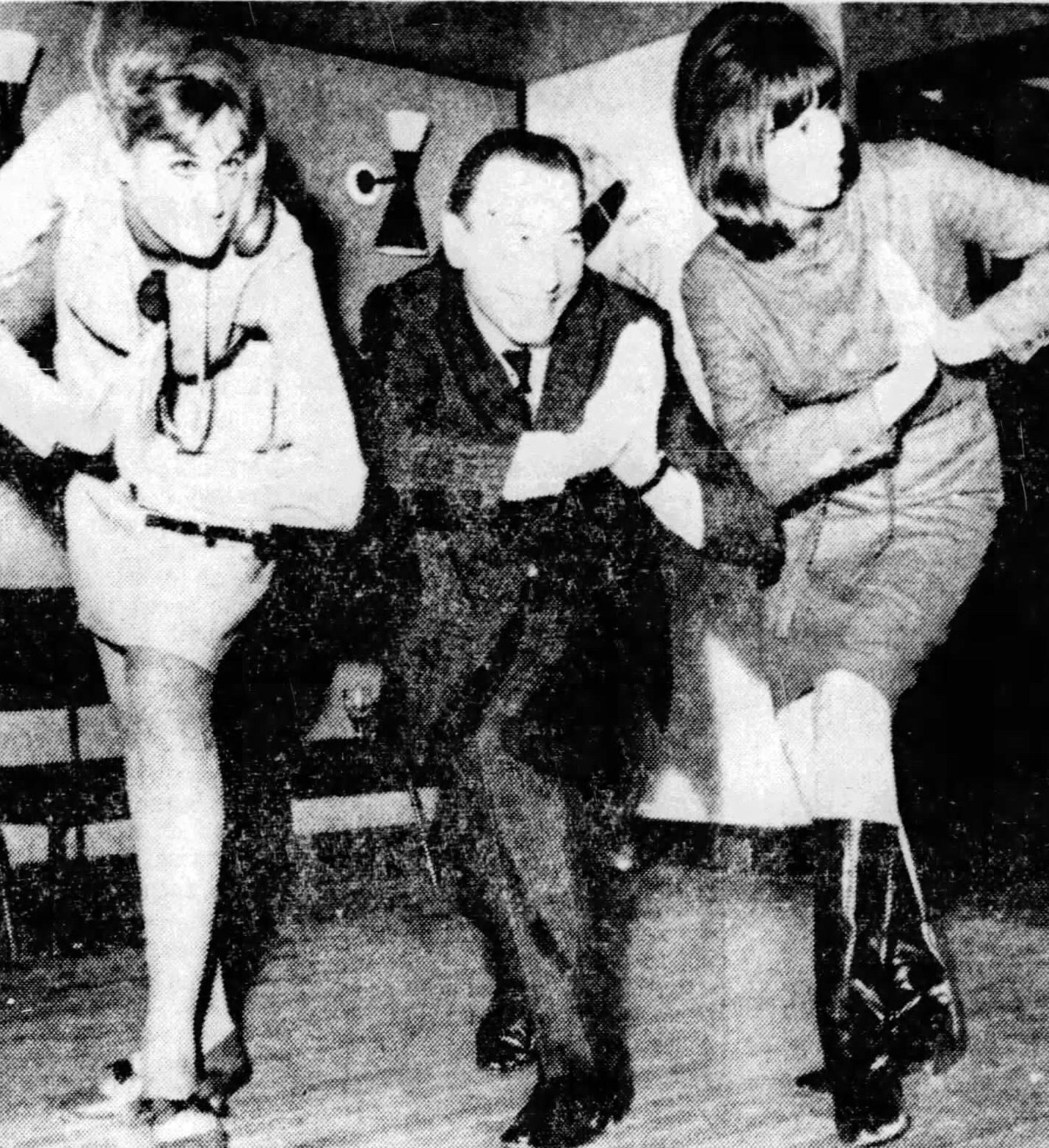

The Loddy Lo was a minor dance fad of the early 1960s, characterized by a "self hand hold" with palms pressed together.
It was introduced by English band leader Joe Loss (pictured above) for Christmas 1963, and described in Marie Cartmell's Dances for Mods and Rockers in 1964.
The Self Hand Hold: Each dancer's own palms are pressed together, with fingertips pointed toward the ceiling. This handhold is to be maintained throughout the whole dance, but the hands can raise or lower in any direction (e.g., up, down, left right, in circles, in zig zags).
Loddy Lo Basic: Everyone starting L, rock forward L (1) and back R (2), turning to the left if desired. A right turn can also be made by rocking back L (1) and forward R (2). This rocking basic can be danced continuously, or the Loddy Skip and Shuffle can be included as desired. It can be danced facing a partner, side by side with a partner, or solo. As in the Twist, dancers can add their own style to the basic dance form.

Loddy Skip: Everyone starting L, step L (1), then take a small hop (and), raising right knee upwards. Then step R (2), raising left knee (and). Repeat both (3-and-4-and). On each step-hop, the hands move as follows: above head, to the left, to the right, above head. Although not explicitly specified, it works best to bring the hands back to neutral in front of your chest between each outward movement (i.e., out on the step and in on the hop).

Shuffle: Everyone starting L, step side L (1) and close R to L (and). Repeat (2-and), moving to the left. Or take side-close steps to the right, moving to the right. When moving to the left, the hands circle to the left, and when moving to the right, the hands circle to the right.
The dance is set to "Loddy Lo," popularized by Chubby Checker.
It was originally written and recorded by Woody Guthrie as "Hey Lolly Lolly" in 1944 (released in 1952), and evolved through adaptations by Pete Seeger (1954), The Vipers Skiffle Group (1957), The Limelighters (1961), and finally, Chubby Checker (1963). Checker's version is about his then-soon-to-be fiancée Catharina Lodders.
© 2020 Nick Enge
For more dance descriptions, see our three books on dancing:
The Book of Mixers: 100 Easy-Teach Dances for Getting Acquainted (2022) by Richard Powers and Nick & Melissa Enge,
Cross-Step Waltz: A Dancer's Guide (2019) by Richard Powers and Nick & Melissa Enge, and
Waltzing: A Manual for Dancing and Living (2013) by Richard Powers and Nick Enge.
Home About Dances Manuals Search